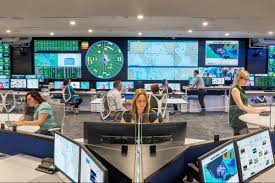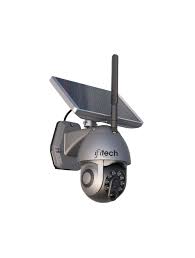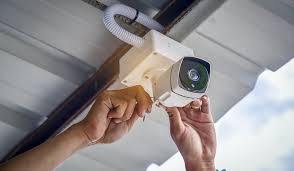Video walls and display solutions have become increasingly popular in recent years, offering a range of benefits for businesses and organizations. A video wall is essentially a large display made up of multiple smaller screens, which can be arranged in various configurations to create a larger, more impactful display.
One of the main advantages of video walls is their ability to create an immersive experience for viewers. By using multiple screens to create a larger image or video, video walls can provide a more engaging and memorable experience than traditional displays.
Video walls are also highly customizable, with the ability to display content in a variety of formats and resolutions. This flexibility makes them ideal for use in a wide range of settings, from corporate events and trade shows to retail stores and public spaces.
Another key benefit of video walls is their scalability. As technology advances and new screens become available, it’s easy to add additional screens to an existing video wall or even expand the size of the wall itself. This means that businesses can invest in video walls with confidence, knowing that they can easily adapt and evolve over time as their needs change.
In addition to these benefits, video walls are also highly reliable and durable. Many models are designed specifically for use in commercial settings, with features like anti-glare coatings and reinforced frames that help protect against damage from everyday wear and tear.
Overall, whether you’re looking to create an impactful display at your next event or enhance the visual appeal of your retail space or office lobby, video walls offer a versatile and effective solution that can help you achieve your goals. With so many different options available on the market today, it’s easier than ever to find a video wall solution that meets your specific needs and budget.
7 Common Questions About Video Walls and Display Solutions: Answered
- What are the benefits of using video walls and display solutions?
- What types of video wall and display solutions are available?
- How much do video walls and display solutions cost?
- What is the best way to set up a video wall or display solution?
- What kind of maintenance is required for a video wall or display solution?
- Are there any special considerations for designing a space with a video wall or display solution?
- Are there any safety concerns when using a video wall or display solution?
What are the benefits of using video walls and display solutions?
There are several benefits of using video walls and display solutions, including:
- Increased impact: Video walls are made up of multiple screens arranged in different configurations to create a larger, more impactful display. This makes them ideal for use in settings where you want to grab people’s attention and make a lasting impression.
- Customization: Video walls are highly customizable and can be used to display content in a variety of formats and resolutions. This flexibility makes them ideal for use in a wide range of settings, from corporate events and trade shows to retail stores and public spaces.
- Scalability: Video walls are scalable, which means that they can easily adapt and evolve over time as your needs change. As technology advances and new screens become available, it’s easy to add additional screens to an existing video wall or even expand the size of the wall itself.
- Reliability: Many video wall models are designed specifically for use in commercial settings, with features like anti-glare coatings and reinforced frames that help protect against damage from everyday wear and tear.
- Cost-effectiveness: While video walls may seem like an expensive investment at first glance, they can actually be quite cost-effective over time. By creating a more impactful display that engages viewers and draws them in, you may be able to generate more leads or sales than you would with traditional displays.
- Versatility: Video walls can be used in a wide range of settings, from corporate events and trade shows to retail stores and public spaces. This versatility makes them an ideal solution for businesses looking to enhance their visual appeal across multiple locations or events.
Overall, video walls offer a versatile and effective solution for businesses looking to create an engaging visual experience that leaves a lasting impression on viewers. Whether you’re looking to showcase your products or services at a trade show or enhance the visual appeal of your retail space or office lobby, video walls can help you achieve your goals with ease.
What types of video wall and display solutions are available?
There are several types of video wall and display solutions available on the market today, each with its own unique features and capabilities. Some of the most common types include:
- LCD Video Walls: These video walls use a grid of LCD panels to create a larger display. They are popular for their high resolution and color accuracy.
- LED Video Walls: These video walls use a grid of LED tiles to create a larger display. They are popular for their brightness and energy efficiency.
- Projection Video Walls: These video walls use projectors to display images or videos on a large screen or wall. They are popular for their flexibility and ability to create unique shapes and sizes.
- Curved Video Walls: These video walls use curved screens to create an immersive experience for viewers. They are popular for their ability to provide a more engaging viewing experience.
- Interactive Video Walls: These video walls incorporate touch-screen technology, allowing viewers to interact with the content being displayed. They are popular in retail settings, where they can be used to showcase products or provide information to customers.
- Digital Signage Displays: These displays are typically used in public spaces like airports, malls, and stadiums, displaying advertisements or other information in a dynamic and eye-catching way.
- 3D Video Walls: These video walls use 3D technology to create an immersive visual experience for viewers. They are popular in museums, theme parks, and other entertainment venues.
Ultimately, the type of video wall or display solution that is best for your needs will depend on factors like your budget, the size of the space you’re working with, and the specific goals you’re trying to achieve with your display.
How much do video walls and display solutions cost?
The cost of video walls and display solutions can vary widely depending on a number of factors, including the size and resolution of the screens, the type of technology used, and any additional features or accessories that are included.
For example, a basic video wall made up of four 55-inch LCD screens with a resolution of 1080p might cost around $10,000 to $15,000. However, if you’re looking for higher resolution displays or more advanced features like touch screens or curved screens, the cost can be significantly higher.
In addition to the initial purchase price, it’s important to consider ongoing costs like maintenance and repair. Many video walls require regular maintenance to keep them running smoothly and prevent damage from everyday wear and tear. Depending on the complexity of your system and the level of support you require, ongoing maintenance costs could add several thousand dollars per year to your total investment.
Overall, while video walls and display solutions can be a significant investment for businesses and organizations, they offer a range of benefits that make them well worth considering. By working with an experienced vendor or integrator who can help you assess your needs and find the right solution for your budget, you can ensure that you’re getting the most value for your investment over time.
What is the best way to set up a video wall or display solution?
Setting up a video wall or display solution can be a complex process, but there are some key steps that can help ensure a successful installation:
- Determine your goals and requirements: Before you begin, it’s important to have a clear understanding of what you hope to achieve with your video wall or display solution. Consider factors like the size and layout of the space, the type of content you’ll be displaying, and any specific technical requirements.
- Choose the right hardware: There are many different types of screens and mounting systems available for video walls, so it’s important to choose hardware that is compatible with your space and meets your technical requirements. Consider factors like screen size, resolution, brightness, and bezel width when making your selection.
- Plan the layout: Once you have your hardware selected, it’s time to plan the layout of your video wall. Consider factors like the viewing distance and angle, as well as any physical obstacles that may impact visibility.
- Install the screens: Installing the screens is typically the most time-consuming part of setting up a video wall or display solution. Be sure to follow manufacturer instructions carefully and use proper mounting equipment to ensure that each screen is securely in place.
- Configure software and content: Once the screens are installed, you’ll need to configure any necessary software and content management systems. This may involve setting up network connections, configuring display settings, and uploading content.
- Test and optimize: Finally, be sure to test your video wall thoroughly before putting it into use. This may involve adjusting settings like brightness or color balance to optimize image quality or tweaking content layouts for maximum impact.
Overall, setting up a video wall or display solution requires careful planning and attention to detail but can result in an engaging and impactful visual experience for viewers.
What kind of maintenance is required for a video wall or display solution?
Like any piece of technology, video walls and display solutions require regular maintenance to ensure optimal performance and longevity. Here are a few key maintenance tasks to keep in mind:
- Cleaning: Regular cleaning is essential for maintaining the visual clarity of your video wall or display solution. Use a soft, non-abrasive cloth to wipe down the screens, and avoid using harsh chemicals or abrasive materials that could scratch the surface.
- Calibration: Over time, the color and brightness settings on your video wall may become misaligned, which can affect image quality. It’s important to regularly calibrate your video wall to ensure that colors are accurate and consistent across all screens.
- Software updates: As new software updates become available for your video wall or display solution, it’s important to install them promptly to ensure optimal performance and security.
- Component replacement: Depending on the specific model of your video wall or display solution, certain components may need to be replaced periodically (such as bulbs or power supplies). Be sure to consult the manufacturer’s recommendations for specific maintenance requirements.
- Professional servicing: In some cases, it may be necessary to bring in a professional technician to perform more extensive maintenance or repairs on your video wall or display solution. Be sure to work with a reputable service provider who has experience working with your specific model of equipment.
By following these guidelines and staying on top of regular maintenance tasks, you can help ensure that your video wall or display solution continues to perform at its best for years to come.
Are there any special considerations for designing a space with a video wall or display solution?
Yes, there are several important considerations to keep in mind when designing a space with a video wall or display solution. Here are a few key factors to consider:
- Viewing distance and angle: When designing a video wall, it’s important to consider the viewing distance and angle of the audience. The size and resolution of the screens should be chosen based on the distance that viewers will be from the display, and the angle at which they will be viewing it.
- Lighting: Lighting is another important consideration when designing a space with a video wall or display solution. Bright lights or sunlight can cause glare on the screens, making it difficult for viewers to see the content. It’s important to position the video wall in an area where there is minimal glare or use anti-glare coatings on the screens.
- Content: The type of content that will be displayed on the video wall should also be taken into consideration during design. The layout and resolution of the screens should be chosen based on the type of content that will be displayed (e.g., static images vs. moving video).
- Power and connectivity: Video walls require significant power and connectivity, so it’s important to ensure that there are adequate electrical outlets and network connections available in the space where the video wall will be installed.
- Maintenance: Finally, it’s important to consider maintenance when designing a space with a video wall or display solution. Video walls require regular cleaning and upkeep to ensure optimal performance, so it’s important to choose a location that allows for easy access for maintenance personnel.
By taking these factors into consideration during design, businesses can create an optimal environment for their video wall or display solution that maximizes impact and usability while minimizing potential issues or challenges.
Are there any safety concerns when using a video wall or display solution?
While video walls and display solutions are generally safe to use, there are a few potential safety concerns that users should be aware of.
Firstly, it’s important to ensure that the video wall is installed securely and in accordance with the manufacturer’s instructions. This includes ensuring that the mounting brackets or stands are properly secured and that the screens themselves are not at risk of falling or tipping over.
In addition, it’s important to consider the potential impact of extended use on viewers’ eyesight. Video walls can be bright and intense, particularly when viewed from close up, so it’s important to take regular breaks and avoid prolonged exposure to the display.
Finally, it’s worth noting that video walls can generate a significant amount of heat, particularly if they are using LED technology. As such, it’s important to ensure that the display is properly ventilated and that any cooling systems are functioning correctly.
Overall, while there are some potential safety concerns associated with video walls and display solutions, these can largely be mitigated through careful installation and use. By taking appropriate precautions and following best practices for safe use of these technologies, businesses can enjoy all the benefits of video walls without compromising on safety or well-being.



